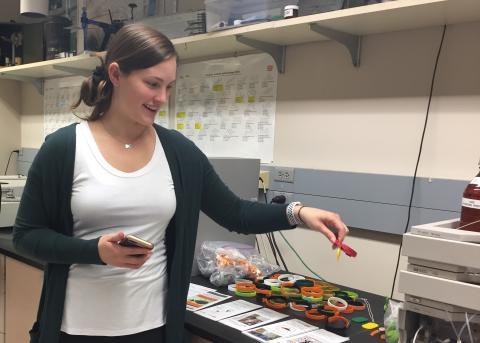Flood victims in the Houston area will help scientists track their exposure to dangerous substances as they rebuild from Hurricane Harvey by wearing a porous silicone wristband that absorbs organic chemicals.
The wristbands were developed in Dr. Kim Anderson’s lab at Oregon State University. Dr. Anderson’s lab funded all wristband expenses, and was part of a post-hurricane effort with collaboration between Baylor College of Medicine, Texas A&M University, University of Texas School of Public Health and Texas Health and Environmental Alliance.
ARCS Scholar Holly Dixon traveled to Houston as part of the OSU team to distribute the wristbands. “I spent hours enrolling people one-on-one in our wristband study,” Dixon said. “It was evident that chemical exposure was a concern for this community not only because of the hurricane-related flooding, but also because of surrounding industrial and Superfund sites.”
“I have found that the wristband is an approachable technology that encourages community involvement and provides valuable data to communities, researchers and other stakeholders,” Dixon explained.
Dixon is a member of Anderson’s lab in the College of Agricultural Sciences, Environmental and Molecular Toxicology, where they will analyze the wristbands for chemical contamination, funded by a grant from the National Institute of Environmental Health Sciences.
Read the articles below for more details.
OSU’s Wristband Samplers Detect Environmental Chemicals in Aftermath of Harvey’s Flooding
Are Hurricane Harvey Floodwaters Making People Sick? These Wristbands Could Tell

